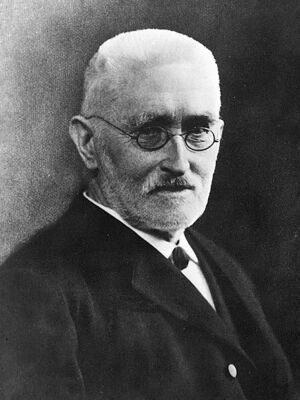Richard Dedekind (nonfiction): Difference between revisions
(Created page with "'''Julius Wilhelm Richard Dedekind''' (6 October 1831 – 12 February 1916) was a German mathematician who made important contributions to abstract algebra (...") |
No edit summary |
||
| (5 intermediate revisions by the same user not shown) | |||
| Line 1: | Line 1: | ||
'''Julius Wilhelm Richard Dedekind''' (6 October 1831 – 12 February 1916) was a German [[Mathematician|mathematician]] who made important contributions to abstract algebra (particularly ring theory), algebraic number theory and the definition of the real numbers. | [[File:Richard_Dedekind.jpg|thumb|Richard Dedekind.]]'''Julius Wilhelm Richard Dedekind''' (6 October 1831 – 12 February 1916) was a German [[Mathematician|mathematician]] who made important contributions to abstract algebra (particularly ring theory), algebraic number theory and the definition of the real numbers. | ||
While teaching calculus for the first time at the Polytechnic school, Dedekind developed the notion now known as a Dedekind cut (German: Schnitt), now a standard definition of the real numbers. The idea of a cut is that an irrational number divides the rational numbers into two classes (sets), with all the numbers of one class (greater) being strictly greater than all the numbers of the other (lesser) class. | While teaching calculus for the first time at the Polytechnic school, Dedekind developed the notion now known as a Dedekind cut (German: Schnitt), now a standard definition of the real numbers. The idea of a cut is that an irrational number divides the rational numbers into two classes (sets), with all the numbers of one class (greater) being strictly greater than all the numbers of the other (lesser) class. | ||
| Line 12: | Line 12: | ||
<gallery> | <gallery> | ||
File:Georg Cantor 1894.png|link=Georg Cantor (nonfiction)|August 31, 1899: [[Georg Cantor (nonfiction)|Georg Cantor]] writes to Dedekind, remarking that his "diagonal process" could be used to show that the power set of a set has more elements than the set itself. | |||
</gallery> | </gallery> | ||
== Fiction cross-reference == | == Fiction cross-reference == | ||
* [[Crimes against mathematical constants]] | |||
* [[Gnomon algorithm]] | |||
* [[Mathematician]] | |||
* [[Mathematics]] | |||
== Nonfiction cross-reference == | == Nonfiction cross-reference == | ||
* [[Georg Cantor (nonfiction)]] | * [[Georg Cantor (nonfiction)]] | ||
* [[Mathematician (nonfiction)]] | |||
* [[Mathematics (nonfiction)]] | |||
External links: | External links: | ||
| Line 24: | Line 32: | ||
* [https://en.wikipedia.org/wiki/Richard_Dedekind Richard Dedekind] @ Wikipedia | * [https://en.wikipedia.org/wiki/Richard_Dedekind Richard Dedekind] @ Wikipedia | ||
[[Category:Nonfiction (nonfiction)]] | [[Category:Nonfiction (nonfiction)]] | ||
[[Category:Mathematicians (nonfiction)]] | [[Category:Mathematicians (nonfiction)]] | ||
[[Category:People (nonfiction)]] | [[Category:People (nonfiction)]] | ||
Latest revision as of 09:18, 26 August 2018
Julius Wilhelm Richard Dedekind (6 October 1831 – 12 February 1916) was a German mathematician who made important contributions to abstract algebra (particularly ring theory), algebraic number theory and the definition of the real numbers.
While teaching calculus for the first time at the Polytechnic school, Dedekind developed the notion now known as a Dedekind cut (German: Schnitt), now a standard definition of the real numbers. The idea of a cut is that an irrational number divides the rational numbers into two classes (sets), with all the numbers of one class (greater) being strictly greater than all the numbers of the other (lesser) class.
In 1888, he published a short monograph titled Was sind und was sollen die Zahlen? ("What are numbers and what should they be?" Ewald 1996: 790), which included his definition of an infinite set.
He also proposed an axiomatic foundation for the natural numbers, whose primitive notions were the number one and the successor function. The next year, Giuseppe Peano, citing Dedekind, formulated an equivalent but simpler set of axioms, now the standard ones.
In 1872, while on holiday in Interlaken, Dedekind met Georg Cantor. Thus began an enduring relationship of mutual respect, and Dedekind became one of the very first mathematicians to admire Cantor's work concerning infinite sets, proving a valued ally in Cantor's disputes with Leopold Kronecker, who was philosophically opposed to Cantor's transfinite numbers.
In the News
August 31, 1899: Georg Cantor writes to Dedekind, remarking that his "diagonal process" could be used to show that the power set of a set has more elements than the set itself.
Fiction cross-reference
Nonfiction cross-reference
External links:
- Richard Dedekind @ Wikipedia

